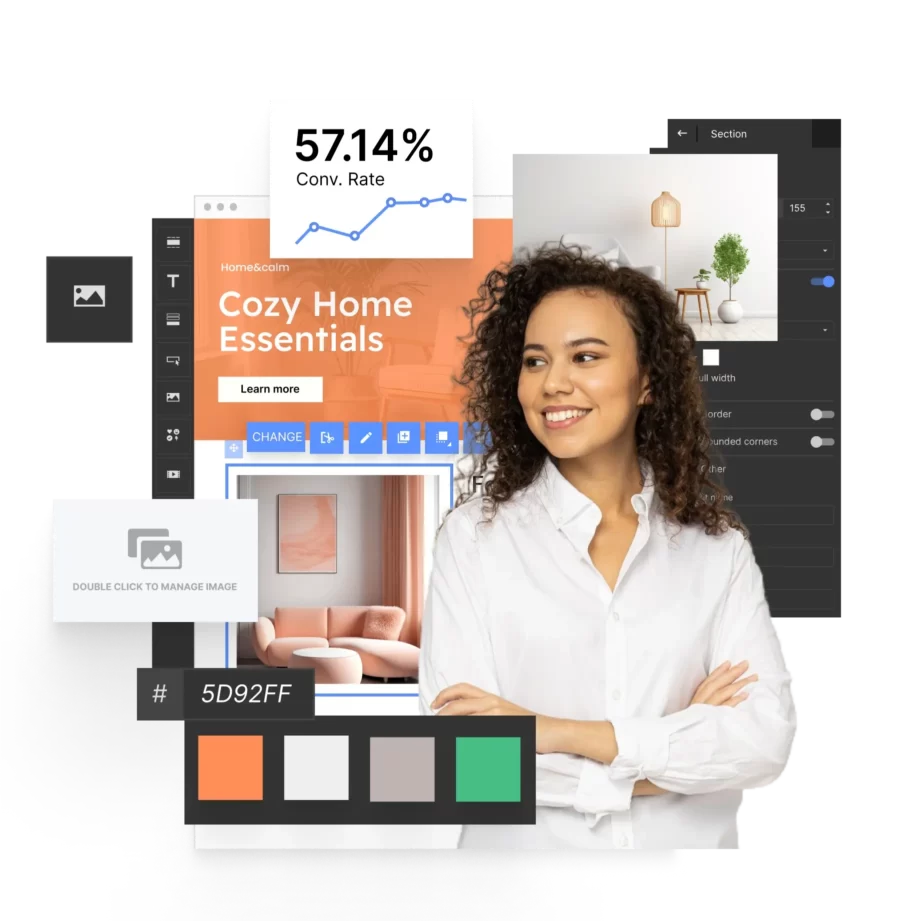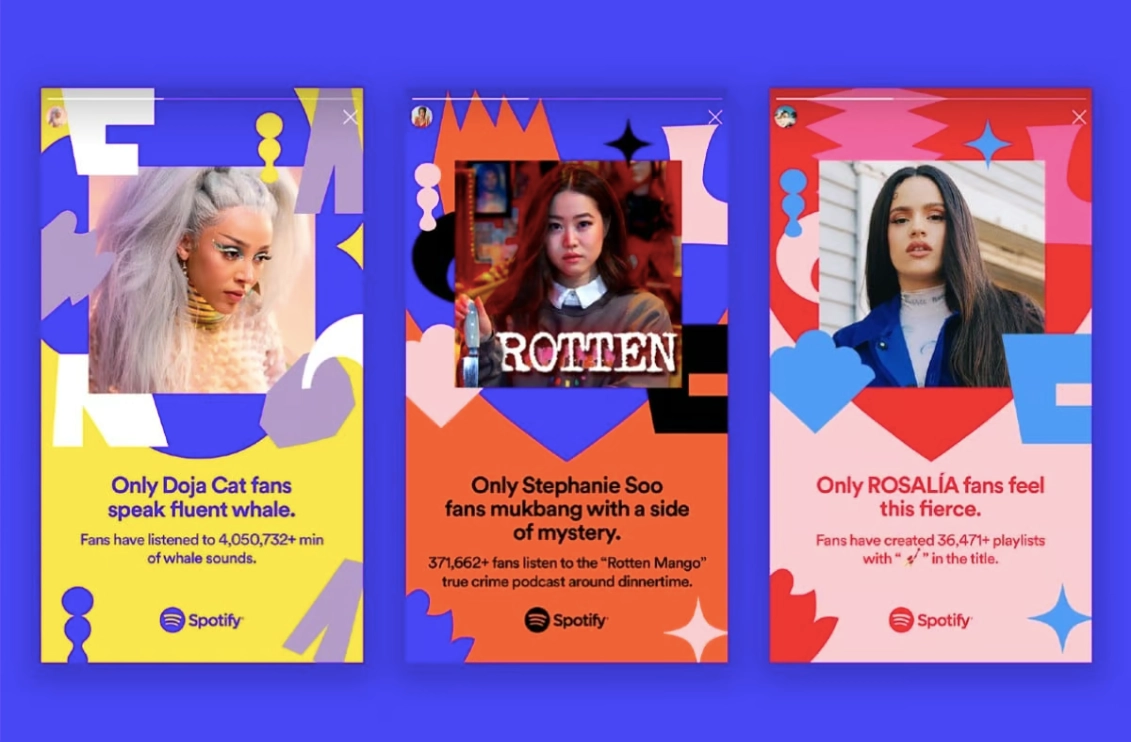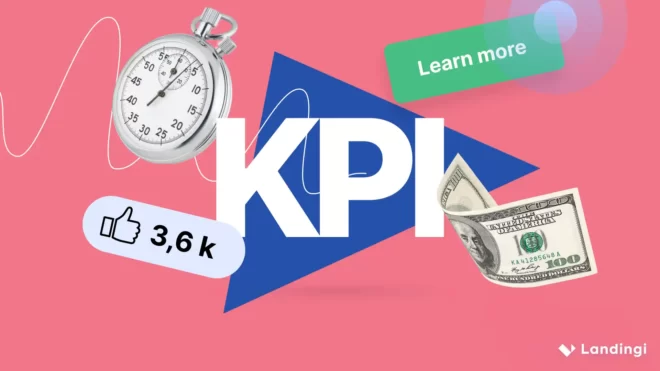A well-crafted digital marketing strategy ensures that every online effort, from content marketing to SEO, is aligned with business objectives. This article delves into the key types of digital marketing strategies, such as content marketing, PPC advertising, and social media marketing, offering actionable insights to help businesses refine their digital marketing tactics. By mastering these approaches, you can create cohesive, targeted plans that drive results and long-term success.
Cameron McIver’s insight, “An effective marketing plan forms the link between what the business wants/wants to deliver and what the customer/market wants/needs,” highlights the importance of aligning business objectives with customer needs. This principle is fundamental to developing a digital marketing strategy that not only drives results but also fosters long-term success by ensuring that every online effort is resonant with both the business’s goals and the evolving demands of the market. Incorporating McIver’s perspective reinforces the necessity of a well-crafted digital marketing growth strategy, as discussed in the exploration of content marketing, PPC advertising, and social media marketing tactics, which are instrumental in navigating the competitive digital marketplace projected to reach $786.2 billion by 2026 (according to PR Newswire).
Whether your focus is building brand awareness or increasing sales, developing a well-rounded strategy tailored to your business needs is essential for standing out in the competitive digital marketplace. Let’s discover how crafting a customized digital marketing campaign and strategy can elevate your brand and drive your business forward in today’s digital world!

What is Digital Marketing Strategy?
A digital marketing strategy is a structured plan that outlines how a business will use digital channels to achieve its marketing goals. It involves identifying specific marketing objectives and using various online tactics and platforms – like search engines, social media, email, and content marketing – to reach your target audience effectively.
At its core, digital marketing strategies connect your business goals with actionable online marketing tactics. Whether the aim is to boost brand awareness, drive traffic, generate leads, or increase sales, a well-thought-out strategy ensures all digital marketing efforts are cohesive and aligned with your overarching business objectives.
9 Key Types of Digital Marketing Strategies
The key types of digital marketing strategies are content marketing, SEO, email marketing, PPC advertising, SEM, social media marketing, influencer marketing, CRO, and omnichannel marketing. Understanding different online marketing strategies, their objectives, and how to measure their success is crucial for creating an effective overall plan. Below, we’ll break down 9 marketing strategies, explaining the key components and how to ensure they are implemented effectively.
1. Content Marketing
Content marketing is the creation and distribution of valuable, relevant content to attract and engage an audience. It’s not just about blogging – it includes videos, podcasts, infographics, and social media posts, all designed to provide value to your audience while subtly promoting your brand. Content marketing drives audience engagement and builds trust and positions you as an industry expert.
Objective
The primary objective of digital content marketing is to attract, engage, and convert your target audience by providing them with valuable, informative, and relevant content.
Tactics
This tactic includes creating blogs, videos, podcasts, white papers, case studies, infographics, and social media posts. Content should address the pain points, needs, or interests of your target audience while positioning your brand as a thought leader in the industry.
Success Factors
To succeed, you need a deep understanding of your audience, a well-planned content calendar, and high-quality, consistent content. It’s also important to distribute content across the channels your audience uses, whether that’s through your website, social media, or email marketing.
Measurement
Content marketing success can be measured using metrics like website traffic, time spent on page, social shares, engagement (comments, likes), lead generation, and conversions.
2. SEO
SEO improves website visibility to rank higher in search engine results pages (SERPs). SEO strategy includes on-page optimization (like keywords and meta tags), technical SEO (site speed, mobile-friendliness), and off-page factors (backlinks). A well-optimized site drives organic traffic, making it easier for potential customers to find you.
Objective
SEO (Search Engine Optimization) aims to increase your website’s visibility on search engines like Google and Bing by improving your ranking for relevant keywords.
Tactics
On-page SEO tactics involve optimizing content, meta tags, headlines, and images for relevant keywords. Off-page SEO tactics focus on building backlinks from reputable sites. Technical SEO ensures your website is easy for search engines to crawl and index by optimizing factors like site speed, mobile responsiveness, and internal linking.
Success Factors
A successful SEO strategy requires thorough keyword research, well-optimized content, a technically sound website, and authoritative backlinks. Regularly updating and improving existing content to reflect current trends and algorithms is also key.
Measurement
To measure the success of an SEO strategy, focus on key metrics such as organic traffic, keyword rankings, bounce rate, domain authority, and the number of quality backlinks.
3. Email Marketing
Email marketing involves sending tailored messages to a segmented list of subscribers. This is a powerful tool for nurturing leads and maintaining relationships with customers. Also, email marketing increases customer retention. By offering personalized content, promotions, and updates directly to a user’s inbox, you can encourage repeat business and increase brand loyalty.
Objective
Email marketing’s objective is to build relationships with your audience by sending personalized messages that nurture leads, retain customers, and drive conversions.
Tactics
Effective email marketing tactic includes newsletters, promotional offers, abandoned cart emails, welcome series, and personalized recommendations. Segmenting your email list is crucial to ensure that your messages are relevant to each subscriber’s interests and behaviors.
Success Factors
Success in email marketing hinges significantly on personalization and timing. Segmenting your audience based on demographics, purchase behavior, and engagement ensures relevant messaging. A/B testing subject lines, email copy, and calls-to-action can improve open and click-through rates.
Measurement
Measure open rates, click-through rates (CTR), bounce rates, conversion rates, and the overall ROI of email campaigns. Tools like Mailchimp and HubSpot can provide detailed analytics.
4. PPC Advertising
PPC advertising generates leads by allowing businesses to place ads in search engines and social media platforms, paying only when users click on the ad. Google Ads and Facebook Ads are popular PPC platforms. PPC (pay-per-click) is effective for driving immediate traffic, especially when combined with SEO for long-term results.
Objective
The objective of pay-per-click advertising is to drive targeted traffic to your website by placing paid ads on search engines, social media platforms, or other websites, with the cost incurred only when a user clicks on your ad.
Tactics
Platforms like Google Ads, Facebook Ads, and LinkedIn Ads allow you to create targeted ad campaigns based on keywords, demographics, interests, or behavior. PPC ads can appear as search results, display ads, or social media posts.
Success Factors
Factors contributing to successful paid advertising campaigns include the critical selection of keywords for search ads and the importance of audience targeting for social media ads. Creating compelling ad copy and designing visually appealing landing pages are also essential. Monitoring and optimizing your bids, targeting, and ad copy continuously will improve performance.
Measurement
Important PPC metrics include click-through rate (CTR), cost per click (CPC), conversion rate, quality score (for search ads), and return on ad spend (ROAS). Google Ads and Facebook Ads offer detailed tracking and analytics.
5. SEM
Search engine marketing (SEM) is broader than PPC and includes all activities aimed at improving visibility in search engines through paid and organic methods. SEM involves combining SEO efforts with paid search campaigns to boost your site’s exposure on search engines like Google and Bing.
Objective
The objective of search engine marketing (SEM) is to increase a website’s visibility in search engine results pages through both paid ads (PPC) and organic methods (SEO).
Tactics
SEM tactics combine PPC campaigns with SEO strategies to dominate both paid and organic search results. For example, you can use Google Ads to target high-intent keywords while optimizing your site for long-term organic ranking.
Success Factors
SEM success relies on finding the right balance between paid and organic efforts. It’s important to target high-performing keywords, monitor ad performance closely, and continuously optimize both your paid and organic search strategies.
Measurement
SEM is measured by tracking a combination of organic search metrics (like keyword rankings and organic traffic) and PPC metrics (like CTR, CPC, and conversion rates).
6. Social Media Marketing
Social media marketing uses platforms like Facebook, Instagram, LinkedIn, and Twitter to promote your business. This strategy fosters direct engagement with your audience and can be used to increase brand awareness, promote content, or run ads. The key to success is choosing the platforms that best align with your target audience and marketing objectives.
Objective
Social media marketing’s objective is building brand awareness, engaging with followers, and driving website traffic or sales through platforms like Facebook, Instagram, Twitter, LinkedIn, and TikTok.
Tactics
This strategy involves creating and sharing content (posts, stories, videos, ads) tailored to each social platform. It also includes running paid social media campaigns and engaging with followers through comments, direct messages, and community building.
Success Factors
A successful social media marketing strategy relies on understanding which platforms your audience uses, posting regularly, creating engaging content, and responding to followers. Paid social ads can amplify your reach.
Measurement
Key social media metrics include follower growth, engagement rate (likes, comments, shares), reach, and website traffic from social channels. For paid campaigns, monitor CTR, cost per acquisition (CPA), and conversion rates.
7. Influencer Marketing
Influencer marketing involves partnering with individuals who have a strong social media presence to promote your brand. Influencer marketing enhances credibility because it taps into the pre-existing trust between influencers and their followers, encouraging a more receptive audience for your brand’s messages. The key is to collaborate with influencers whose audience matches your target demographic.
Objective
Influencer marketing leverages the trust and reach of social media influencers to promote your brand or product to their audience, driving brand awareness and sales.
Tactics
This strategy involves identifying influencers (macro or micro) whose followers align with your target market, and collaborating with them to create sponsored content, product reviews, or giveaways. Influencers can create authentic content that resonates with their audience, making the promotion feel more organic.
Success Factors
The key success factors in influencer marketing include finding the right influencer who aligns with your brand’s values and ensuring their audience is engaged. Building long-term partnerships with influencers can also lead to more authentic and impactful collaborations.
Measurement
Measure metrics like engagement (likes, comments, shares), brand mentions, and sales generated through influencer campaigns. Use UTM codes or affiliate links to measure conversions directly.
8. CRO
Conversion rate optimization (CRO) focuses on improving the percentage of visitors who take a desired action on your website, such as filling out a form or making a purchase. This can involve tweaking design elements, simplifying navigation, or improving call-to-action buttons, all aimed at boosting conversions. Implementing effective conversion rate optimization boosts sales by encouraging more website visitors to complete purchases.
Objective
CRO’s objective is to increase the percentage of website visitors who complete a desired action, such as signing up for a newsletter, filling out a form, or making a purchase.
Tactics
Tactics in CRO involve analyzing user behavior on your site, identifying barriers to conversion, and making data-driven adjustments. These can include improving website layout, simplifying navigation, optimizing call-to-action buttons, and reducing page load time.
Success Factors
Success in CRO requires a deep understanding of user behavior and continuous testing. A/B testing different versions of landing pages, forms, or buttons can help determine what resonates best with visitors.
Measurement
Conversion rate, bounce rate, time on page, and user behavior flow are critical measurements for CRO. Tools like Google Analytics, Hotjar, or Crazy Egg can help track and analyze user interactions.
9. Omnichannel Marketing
Omnichannel marketing ensures a seamless experience for customers across all digital and physical touchpoints – whether they’re interacting with your brand via social media, email, your website, or in-store. An effective omnichannel strategy requires consistent messaging and integrated platforms to maintain fluid communication with your audience.
Objective
Omnichannel marketing aims to create a seamless and integrated experience for customers across all digital and physical touchpoints, enhancing engagement and boosting brand loyalty.
Tactics
This strategy involves integrating marketing efforts across various platforms (website, email, social media, mobile apps, in-store, etc.) to deliver consistent messaging. It might include retargeting ads, personalized email offers based on browsing history, or using a mobile app to enhance in-store experiences.
Success Factors
Omnichannel success depends on factors such as consistent messaging, unified customer data, and synchronized marketing channels. Every touchpoint should feel like a continuation of the last, allowing customers to move between platforms without losing the brand experience.
Measurement
You should measure customer retention rate, customer lifetime value (CLV), cross-channel engagement, and conversion rate. Tracking these metrics across platforms requires integrated data systems like CRM software or customer data platforms (CDPs).
6 Digital Marketing Strategy Best Practices and Tactics
Best practices and tactics for digital marketing strategies include data-driven decision-making, content marketing with SEO integration, personalization & segmentation, omnichannel marketing, mobile optimization, and social media engagement & community building. Read on to learn more about digital marketing tactics and practices you should consider incorporating into your online marketing strategy.
1. Use Data for Decision Making
Data-driven marketing means leveraging insights from customer behavior, website analytics, and market research to inform your strategy. By analyzing key metrics like click-through rates, conversion rates, and customer demographics, you can make informed decisions that improve campaign performance. Importantly, data analytics tracks campaign performance, allowing marketers to adjust strategies in real-time for better results. Moreover, A/B testing refines digital campaign effectiveness by systematically comparing different versions of a campaign to see which performs better, thus providing concrete data to guide marketing decisions.
For example, set up Google Analytics goals to track specific conversions (e.g., newsletter signups, purchases). Review the data weekly and identify your top-performing channels. Allocate 20% more budget to your top two channels and pause any that consistently underperform.
Incorporate A/B testing by creating two versions of your ad or landing page, with slight variations in design or content, to see which yields better results in terms of conversions or other key metrics.
Use the “Acquisition” report in Google Analytics to analyze which channels (organic search, paid ads, social) drive the most traffic and adjust budget accordingly.
2. Optimize Content with SEO Integration
Your content should not only be informative but also optimized for search engines. Incorporating relevant keywords, creating high-quality backlinks, and ensuring that your website is mobile-friendly will help your content rank higher and reach a wider audience.
For example, research five long-tail keywords related to your niche using tools like Ahrefs or Ubersuggest. Write and publish one blog post per week targeting one of those keywords. Ensure your blog post has the target keyword in the title, URL, H1, meta description, and image alt tags.
Set a content calendar with one keyword-focused blog post per week for the next three months. Track organic rankings after publication using tools like SEMrush.
3. Personalize and Segment Your Audience
Personalized marketing has become essential for connecting with today’s consumers. By segmenting your audience based on demographics, behavior, or interests, you can deliver tailored messages that resonate with each group, resulting in higher engagement and conversion rates.
For example, in your email marketing platform (e.g., Mailchimp or HubSpot), segment your email list by past purchases or browsing behavior. Create a three-part email sequence for customers who bought a specific product, offering upsell recommendations and a discount on related items.
Identify your top customer segments (e.g., frequent buyers, high-value customers) and send a personalized offer based on their purchase history within the next 30 days.
4. Implement Omnichannel Marketing
Omnichannel marketing provides a unified brand experience across all digital channels. By integrating tools and technologies such as email marketing platforms, social media, and CRM software, you can create a more cohesive customer journey.
For example, create a campaign around a key product launch or promotion and schedule posts across Instagram, Facebook, and LinkedIn using a social media management tool like Hootsuite. Simultaneously, run a retargeting ad on Google Ads and send a personalized email to your list with the same messaging.
Build a unified content plan for the next campaign. Coordinate social posts, emails, and retargeting ads to launch simultaneously with consistent branding and messaging.
5. Optimize for Mobile Users
With more than 50% of internet users accessing websites via mobile devices, it’s evident that mobile optimization improves user experience significantly. By ensuring fast loading times, responsive design, and an easy-to-navigate user interface for mobile visitors, you can greatly enhance user engagement and overall satisfaction with your site.
For example, run a mobile responsiveness test on your website using Google’s Mobile-Friendly Test. If needed, update your website’s CSS for responsive design, reduce image sizes for faster load times, and add sticky buttons for easier navigation on mobile devices.
Identify the top 3 pages with the highest mobile bounce rate using Google Analytics and optimize these pages for mobile first (e.g., reduce load time, simplify forms).
6. Engage and Build Communities on Social Media
Engagement is key to social media success. Actively respond to comments, ask questions, and create interactive content (like polls or live videos) to foster a sense of community. Building a loyal following will increase brand awareness and customer retention.
For example, schedule one live Q&A session on Instagram or Facebook each month. During the live session, engage directly with your audience by answering their questions in real-time, mentioning users by name, and asking follow-up questions to encourage more interaction.
Announce your live session one week in advance via email and social media posts, reminding followers 24 hours before the event. Prepare 5-7 FAQs and encourage attendees to share their own questions during the event.
How to Create Effective Digital Marketing Strategy in 8 Steps?
To create an effective digital marketing strategy, start by defining your business goals, understanding your target audience, and analyzing competitors to uncover opportunities. Then, audit your current digital presence, develop a content strategy, choose the right marketing channels, allocate resources, and continuously measure and optimize your efforts for maximum impact.
By following these eight crucial steps, you’ll be equipped to build a strategy that not only drives results but also gives you a competitive edge in the digital landscape – read on to learn how to put each step into action!
Step 1. Define Your Business Goals
Start by clearly defining your business goals, to create an effective digital marketing strategy. These objectives will guide all your marketing efforts. Common goals include increasing website traffic, generating leads, boosting sales, or enhancing brand awareness.
Use the SMART framework (Specific, Measurable, Achievable, Relevant, Time-bound) to set clear goals. Align your goals with broader business objectives, such as expanding into new markets or launching a new product.
Examples: “Increase organic traffic by 30% in the next six months,” or “Generate 100 new leads per month through PPC campaigns.”
Step 2. Identify Your Target Audience
Understanding who your target audience is will help you craft relevant messages that resonate with them. Without a clear picture of your ideal customer, your marketing efforts may be misdirected.
Create buyer personas – these are detailed profiles that describe your ideal customers based on demographics, online behavior, pain points, and interests. Use tools like Google Analytics, social media insights, or customer surveys to gather data on your current audience. Consider creating multiple personas to represent different segments of your target market.
Step 3. Conduct a Competitive Analysis
Analyzing your competitors will help you understand their strategies and identify opportunities or gaps in the market. Knowing what works for your competition gives you a foundation to build a better approach.
Identify your top 3-5 competitors and examine their digital presence: websites, social media, SEO, content, and advertising. Tools like SEMrush or Ahrefs can help you analyze your competitors’ keyword strategies, backlinks, and paid ads.
Look at what type of content performs best for them – blog posts, videos, or infographics? Identify areas where they might be weak or inactive, and capitalize on those opportunities.
Step 4. Perform an Audit of Your Current Digital Presence
Performing an audit before devising new strategies is crucial to understand what aspects of your current digital presence are effective and which ones need improvement. This evaluation process will help pinpoint the strengths and weaknesses across your website, social media, email campaigns, and SEO efforts.
Use Google Analytics to evaluate your website’s performance—look at traffic sources, bounce rate, time on page, and conversions. Audit your SEO performance using tools like Moz or Screaming Frog to find technical issues or keyword gaps. Review your social media profiles to see which platforms are generating the most engagement and traffic.
Step 5. Develop a Content Strategy
A well-crafted content strategy ensures that you produce content that resonates with your audience and supports your business goals. It should outline what type of content you’ll create, how often, and where you’ll publish it.
Plan a mix of content types (blog posts, videos, infographics, podcasts, etc.) to engage your audience on different platforms. Create a content calendar to schedule posts regularly, and use tools like Trello or Asana to keep track of deadlines.
Incorporate keyword research into your content planning to ensure your articles and pages are SEO-friendly. Re-purpose content across different channels. For example, a blog post can be turned into a video or infographic to maximize reach.
Step 6. Choose the Right Digital Marketing Channels
The right digital marketing channels are crucial for achieving your marketing objectives. Not all online marketing channels will suit your goals or audience. It’s important to focus on the channels that offer the best ROI and where your audience is most active.
If you have a product aimed at professionals, LinkedIn may be the best platform for your paid and organic content. For visually-driven products, focus on Instagram and Pinterest. If your goal is brand awareness and engagement, Twitter or Facebook might be better suited.
Leverage Google Ads for immediate traffic and search engine optimization (SEO) for long-term organic growth. Use email marketing to nurture leads and maintain customer relationships, especially if your target audience prefers more personalized communication.
Step 7. Allocate Your Budget and Resources
Your budget and resources need to be carefully allocated across your chosen channels to ensure each part of your digital marketing strategy is properly supported.
Divide your budget across paid ads, content creation, social media management, SEO, and tools (e.g., CRM, email marketing platforms). Consider starting small with PPC campaigns or social media ads to test what works before scaling up.
Outsource tasks like content creation or graphic design if your team lacks the necessary skills in-house. Tools like Fiverr or Upwork can help find freelancers at competitive rates. Always leave room in the budget for ongoing optimization and unforeseen costs, such as expanding a successful ad campaign.
Step 8. Measure and Optimize
Finally, continuously measure the performance of your digital marketing efforts to ensure they are meeting your goals. Use the insights you gather to optimize your strategy for better results.
Use tools like Google Analytics, Facebook Insights, or email marketing platforms to track key metrics (e.g., traffic, conversions, engagement, cost per click). Set up clear KPIs (Key Performance Indicators) for each channel. For example, track organic traffic and keyword rankings for SEO, or track cost per acquisition (CPA) for PPC.
Regularly review and analyze the data—identify trends, see what’s working, and make data-driven decisions to adjust your campaigns. Run A/B tests on different elements, such as ad copy, landing page designs, or email subject lines to optimize for better performance.
4 Successful Examples of Digital Marketing Strategy
Let’s discover four successful digital marketing strategies from leading brands. Nike, Coca-Cola, Spotify, and Airbnb demonstrate how personalization, emotional engagement, and data-driven insights can drive customer engagement and global brand visibility through innovative digital platforms.
1. Nike’s Integrated Digital Engagement Strategy: Uniting Emotion and Innovation
Nike’s strategy showcases how brands can use digital platforms to emotionally engage audiences, combining influencer partnerships, real-time content, and storytelling to create impactful campaigns that resonate globally.
Nike is known for its impactful digital marketing campaigns. In particular, the “Dream Crazier” campaign celebrated female athletes, leveraging social media, video content, and influencer partnerships to drive engagement. Nike also focused on the power of storytelling to inspire resilience and strength, creating emotional connections with its audience. The “Breaking2” campaign, which aimed to break the two-hour marathon barrier, showcased Nike’s focus on innovation, team effort, and community engagement, further positioning it as a leading global brand. Both campaigns combined real-time content, influencer collaboration, and social engagement to achieve remarkable success.
2. Coca-Cola’s Personalization at Scale: Driving Global Consumer Engagement
Coca-Cola employed a digital marketing strategy focused on personalization and user-generated content, turning a global audience into brand advocates through targeted content and extensive data analytics.
Coca-Cola’s “Share a Coke” campaign exemplified personalized digital marketing at scale. By replacing its iconic logo with popular names, Coca-Cola encouraged customers to share their experiences online, generating user-generated content across social media. The brand’s focus on personalization and community engagement created a viral movement, making customers feel personally connected to the product. Coca-Cola also leveraged data analytics to target specific markets and optimize its campaign globally.

3. Spotify’s Data-Driven Personalization for Retention and Growth
Spotify leveraged its data to deliver personalized experiences to users, creating a strategy centered on engagement through unique, shareable content and user-driven playlists.
Spotify’s “Only You” campaign demonstrated the power of personalization through data analytics. The campaign featured unique playlists based on users’ listening habits, encouraging them to share their experiences on social media. This not only retained existing customers but also drove word-of-mouth promotion. Spotify’s focus on individualized content catered to personal tastes, ensuring high engagement and customer loyalty.

4. Airbnb’s Content-Driven SEO Strategy for Global Brand Visibility
Airbnb’s strategy integrated SEO optimization with valuable content creation to drive organic growth, user engagement, and brand visibility in a competitive digital landscape.
Airbnb successfully transformed the travel industry with its digital strategy focused on SEO and content marketing. By offering valuable content such as host guidebooks and personalized travel recommendations, Airbnb increased its visibility and customer engagement. It emphasized user-generated content and optimized its platform for search engines, allowing travelers to find and book unique experiences. The combination of SEO, personalized content, and technology integration allowed Airbnb to dominate the digital space in the travel sector.

How to improve digital marketing strategy?
To improve your digital marketing strategy, focus on analyzing performance metrics and adapting your approach based on data insights. Consistent testing, whether through A/B testing for campaigns or optimizing website elements for conversions, is essential to refine your tactics.
What is the most effective digital marketing strategy?
The most effective digital marketing strategy is a combination of content marketing, SEO, and paid advertising. It may vary based on your goals and target audience. The key is to diversify your approach and continuously monitor performance.
What are the limitations of digital marketing strategies?
The limitations of digital marketing strategies include oversaturation of content, ad fatigue, and algorithm changes. Additionally, digital marketing can require a significant upfront investment of time and resources to see meaningful returns.
What is the best digital marketing strategy for small business?
The best digital marketing strategy for small businesses is content marketing combined with local SEO and social media marketing. These methods are cost-effective and help build a loyal customer base while increasing local visibility.
What is the best digital marketing strategy for a brand?
The best digital marketing strategy for a brand is often a combination of influencer marketing, social media marketing, and content creation. Building a strong brand presence online requires engaging content and trust-building with your audience.
What is the best digital marketing strategy for beginners?
For beginners, starting with content marketing and social media is an excellent way to ease into marketing. Both strategies are accessible and allow for natural growth as you learn more about your audience and refine your approach.
Where to find best digital marketing plan template?
You can find excellent digital marketing plan templates on platforms like HubSpot, CoSchedule, and Smartsheet. These templates offer structured guidance for developing a customized plan based on your business needs.
Boost Business Growth with Optimized Digital Strategies and High-Converting Landing Pages
To stay competitive in today’s digital landscape, you must adopt and continually refine a comprehensive digital marketing strategy. Whether through SEO, content marketing, or PPC advertising, focusing on customer-centric approaches and leveraging data-driven insights can position your brand for long-term success. Understanding and implementing these diverse digital tactics ensures you’re engaging your audience, driving conversions, and ultimately, achieving your business goals.
By crafting high-converting landing pages, utilizing targeted campaigns, and optimizing your strategies across various digital channels, you can significantly boost business growth. A key element of these efforts is using tools like Landingi, a well-featured and reliable landing page builder. With its pixel-perfect editor, Smart Sections for easy updates, A/B testing options, over 180 integrations, and flexible publishing options, Landingi allows you to create high-converting landing pages that align with your overall strategy and digital marketing skills. By leveraging powerful tools like this, you can streamline the creation process, optimize conversions, and enhance overall digital performance, driving sustainable growth and success.
Give Landingi a try for free and see how easily you can boost your conversions and grow your business!






